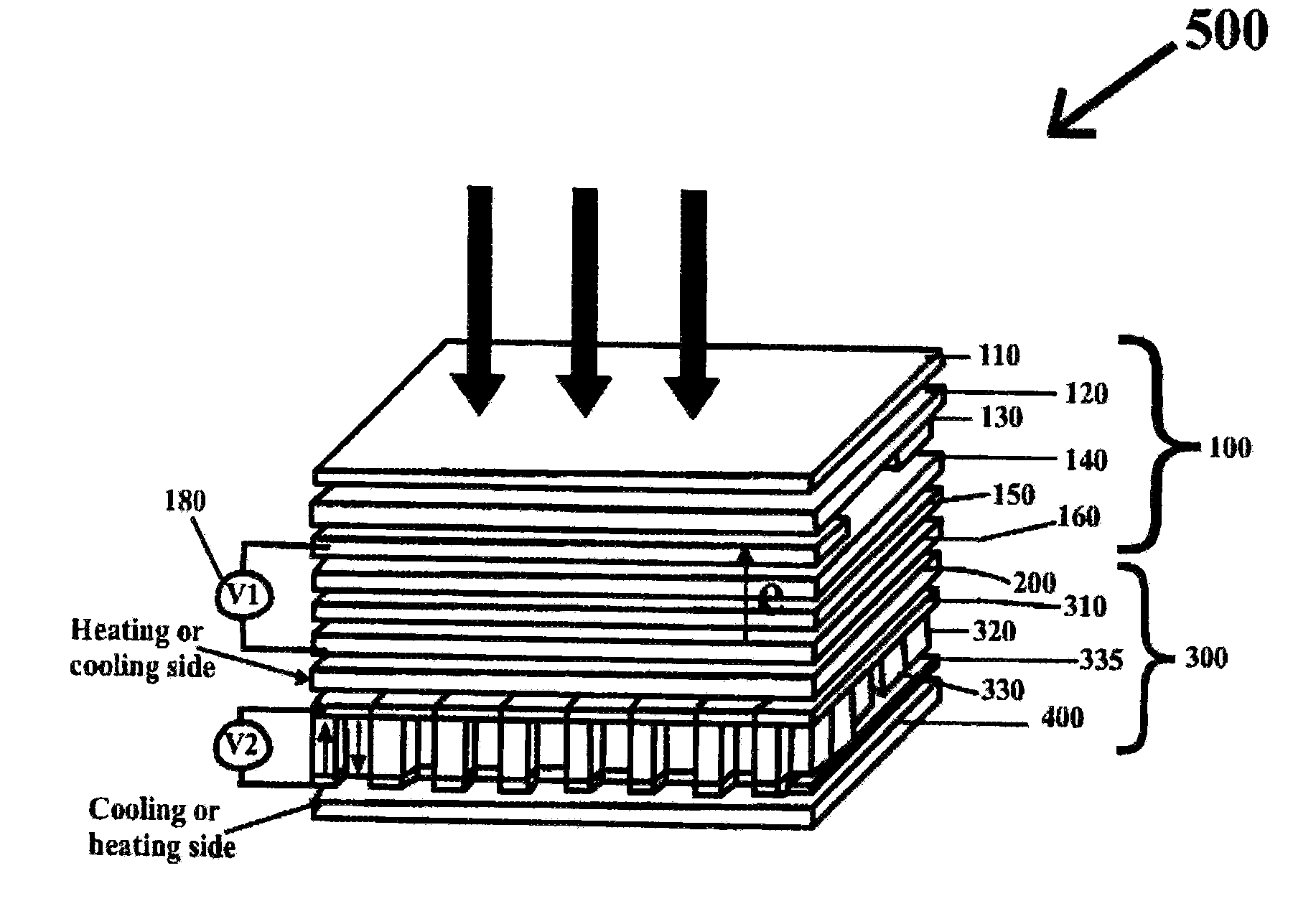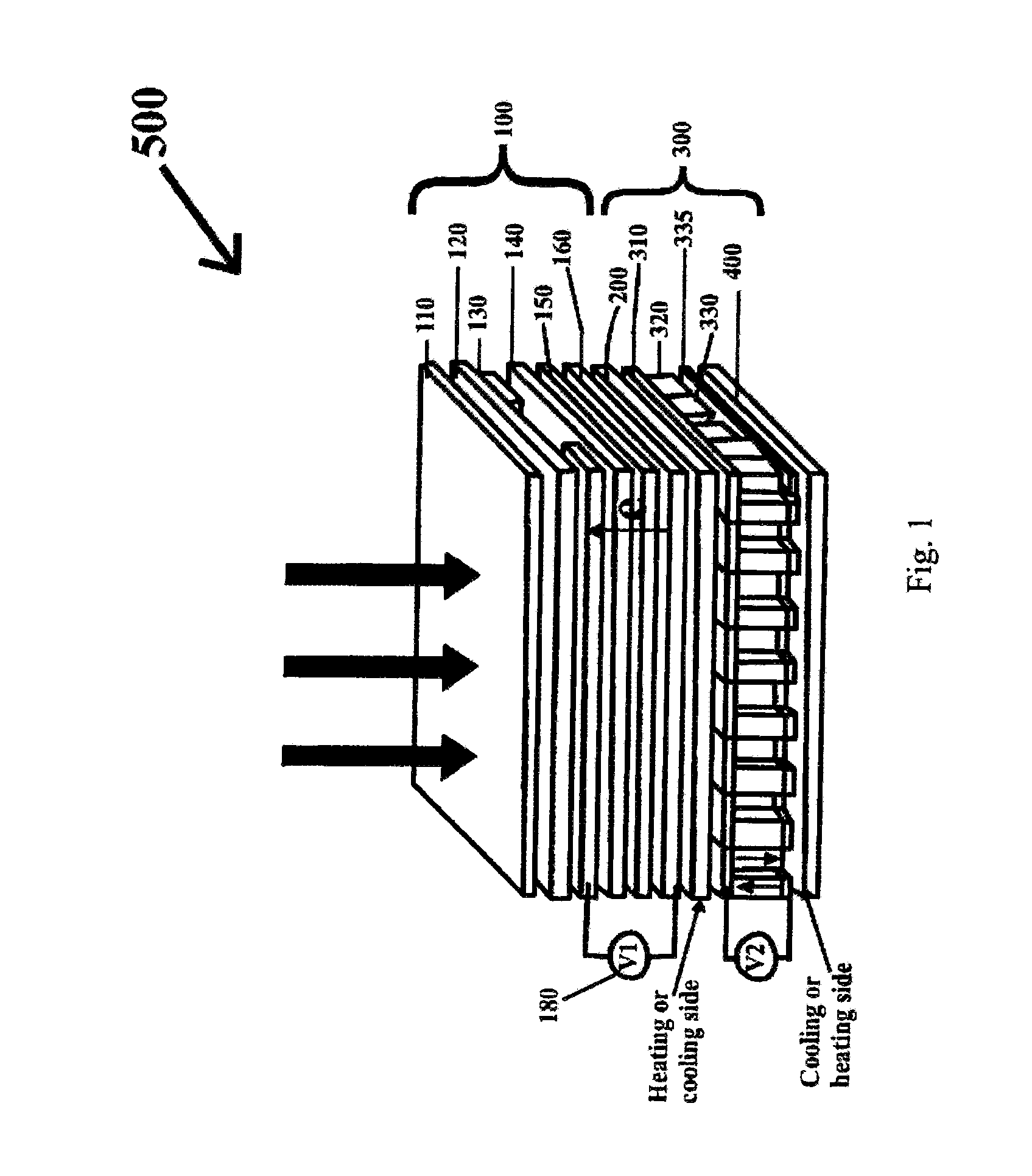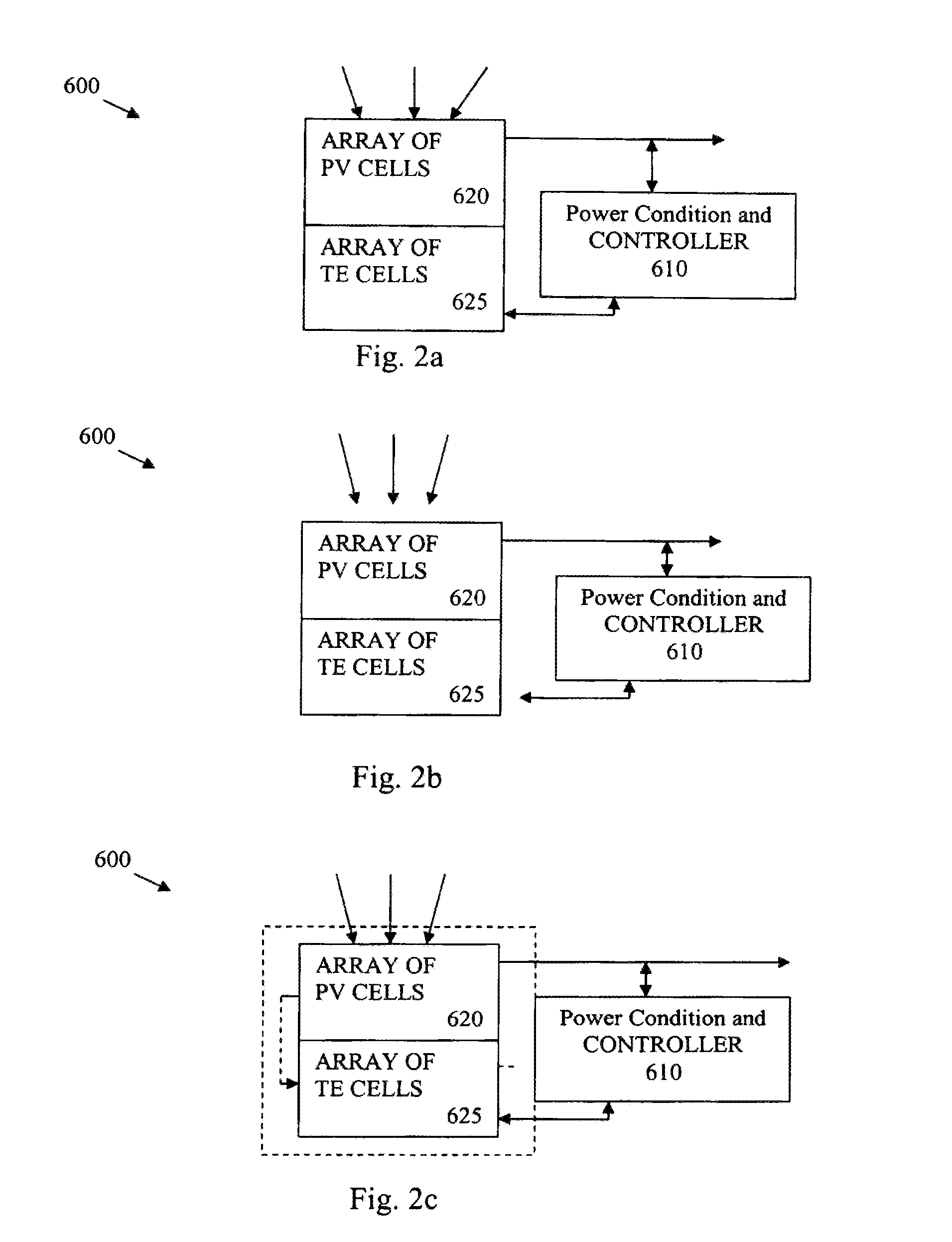Hybrid Solar Cell Integrating Photovoltaic and Thermoelectric Cell Elements for High Efficiency and Longevity
a solar cell and hybrid technology, applied in the field of solar cells, can solve the problems of reducing the amount of energy which can be generated on a given site, such as a building or a plot of land, adding cost and complexity to the pv system, and disadvantages in cost per unit area, so as to improve the efficiency of array design, prevent the temperature of the cell from reaching a very high, and increase the cell life
- Summary
- Abstract
- Description
- Claims
- Application Information
AI Technical Summary
Benefits of technology
Problems solved by technology
Method used
Image
Examples
first embodiment
[0041]In summary, a first embodiment provides a method of producing a hybrid solar cell having an increased electric output. The method includes providing photovoltaic cell elements, providing thermoelectric cell elements coupled with the photovoltaic cell elements as a hybrid solar cell and operating the thermoelectric cell elements in an operational mode to efficiently increase the electric output and increase the longevity of the hybrid solar cell.
[0042]The operational modes can include operating the hybrid solar cell in a first mode of operation using heat generated from absorbed solar energy and other heat generating processes, including ohmic heat from current flow through the photovoltaic cell elements and connections with the thermoelectric cell elements configured between this “hot side” and a colder ambient, to produce electric energy and combining the electric output of the thermoelectric cell elements and the photovoltaic cell elements to increase the power output of the...
second embodiment
[0043]A second embodiment provides a hybrid solar cell that includes a photovoltaic cell, a thermoelectric cell coupled with the photovoltaic cell and at least two modes of operation to efficiently increase the electric output and increase the longevity of the hybrid solar cell. The photovoltaic cell includes a first layer for allowing solar light to enter the photovoltaic cell, an anti-reflective layer adjacent to the first layer, a n-type semiconductor layer, a p-type semiconductor layer adjacent to the n-type semiconductor layer, a first conductive layer sandwiched between the anti-reflective layer and one of the n-type and p-type semiconductor elements and a second conductive layer sandwiched between the anti-reflective layer and an opposite one of the n-type and p-type semiconductor elements. The hybrid solar cell can include an electrically insulating layer between the photovoltaic cell and the thermoelectric cell. The thermoelectric cell includes a n-type semiconductor layer,...
PUM
 Login to View More
Login to View More Abstract
Description
Claims
Application Information
 Login to View More
Login to View More - R&D
- Intellectual Property
- Life Sciences
- Materials
- Tech Scout
- Unparalleled Data Quality
- Higher Quality Content
- 60% Fewer Hallucinations
Browse by: Latest US Patents, China's latest patents, Technical Efficacy Thesaurus, Application Domain, Technology Topic, Popular Technical Reports.
© 2025 PatSnap. All rights reserved.Legal|Privacy policy|Modern Slavery Act Transparency Statement|Sitemap|About US| Contact US: help@patsnap.com



